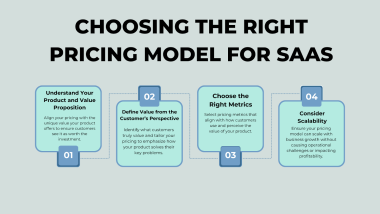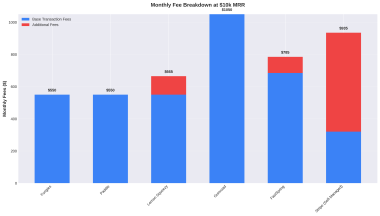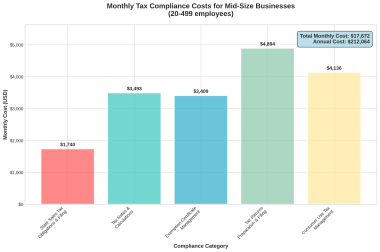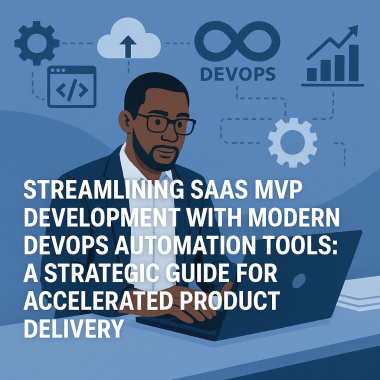For the solo developer or indie hacker, the journey to $10,000 in Monthly Recurring Revenue (MRR) is a celebrated milestone. It represents the culmination of countless hours of coding, designing, and marketing—a testament to the power of a single individual to create a sustainable business from scratch. However, a hidden antagonist often lurks in the shadows of this success: the labyrinthine world of global sales tax, VAT, and financial compliance. This is not just a minor administrative hurdle; it is a complex, time-consuming, and legally perilous challenge that can derail even the most promising SaaS or digital product business.
As your customer base expands from your local region to a global audience, you are suddenly faced with a critical decision that will define the operational future of your business. Do you take the do-it-yourself (DIY) route, piecing together a payment processor like Stripe with various tax software and manual processes? Or do you partner with a Merchant of Record (MoR), an all-in-one solution that acts as a reseller and handles the entire financial and legal burden for you?
This decision is not merely about transaction fees. It’s about risk, time, and focus. For the indie hacker, whose most valuable asset is the time and mental energy to build and grow their product, the choice can mean the difference between scaling to new heights or getting bogged down in a quagmire of international tax law.
This comprehensive guide is designed for the solo developer and indie hacker standing at this crossroads. We will dissect the two paths, providing a deep-dive comparison of the leading platforms in the space. We will analyze Stripe as the champion of the DIY approach against a formidable lineup of Merchant of Record services: Fungies.io, Paddle, Lemonsqueezy, Gumroad, and Fastspring. We will also examine Adyen to clarify its role in the payments landscape and why it’s generally not a fit for this audience.
Through detailed analysis, financial modeling, and a case study of a startup hitting $10,000 MRR, this article will equip you with the knowledge to make the most strategic choice for your business, ensuring your journey to financial success is not sabotaged by the complexities of global commerce.
Chapter 1: The Two Paths to Global Sales: Merchant of Record vs. DIY
Every indie hacker who dreams of a global customer base must eventually confront the operational reality of selling across borders. The moment your product is purchased by someone in a different country, you step into a complex web of international regulations. At the heart of this complexity lies the fundamental choice between two distinct models for handling payments and compliance: partnering with a Merchant of Record (MoR) or building your own solution, often referred to as the Do-it-Yourself (DIY) approach.
What is a Merchant of Record (MoR)?
A Merchant of Record is a legal entity that acts as an intermediary between your business and your customers. In the eyes of the law and the payment networks, the MoR is the one selling the product. They take on the full financial and legal responsibility for every transaction. This means they are responsible for:
•Processing Payments: Handling all interactions with payment gateways and credit card companies.
•Global Tax Compliance: Calculating, collecting, and remitting all sales taxes, VAT, and GST in every jurisdiction where your customers reside. This is the most significant value proposition of an MoR.
•Fraud & Chargeback Management: Assuming the risk of fraudulent transactions and managing the dispute process for chargebacks.
•Currency Conversion: Handling the complexities of accepting payments in multiple currencies.
•Compliance with Local Laws: Ensuring that all sales adhere to the local consumer protection and payment regulations of each country.
Essentially, you sell your product in bulk to the MoR, and the MoR sells it to the end customer. You receive a payout from the MoR for your sales, minus their fee. This model is akin to selling your app on the Apple App Store or Google Play Store, where Apple and Google act as the MoR.
The Do-It-Yourself (DIY) Approach
The DIY approach, most commonly associated with using a payment processor like Stripe, puts you, the business owner, in the driver’s seat. Stripe provides a powerful and flexible infrastructure for processing payments, but it does not act as your Merchant of Record. This means that while Stripe facilitates the transaction, your business remains the legal seller of record.
With the DIY model, you are responsible for:
•Integrating a Payment Processor: Setting up and maintaining your integration with Stripe or a similar service.
•Managing Tax Compliance: This is the most significant undertaking in the DIY model. You must determine where you have tax obligations (a concept known as “nexus”), register with the tax authorities in each of those jurisdictions, correctly calculate and collect the right amount of tax from each customer, and file regular tax returns and remit the collected taxes to each government.
•Handling Fraud and Disputes: While Stripe offers fraud detection tools, you ultimately bear the financial risk of chargebacks.
•Managing Subscriptions and Invoicing: You will need to use additional tools or build your own logic for recurring billing and invoicing.
To manage the tax burden, you would typically need to integrate a separate service like Stripe Tax, Avalara, or TaxJar. However, these services primarily automate the calculation of taxes. The legal responsibility for registration, filing, and remittance remains squarely on your shoulders.
At a Glance: MoR vs. DIY Responsibilities
The following table illustrates the stark difference in the division of labor between the two models:
| Responsibility | Merchant of Record (MoR) | DIY (e.g., Stripe) |
| Global Sales Tax/VAT/GST | Handled by MoR | Your Responsibility |
| Tax Registration & Filing | Handled by MoR | Your Responsibility |
| Payment Processing | Handled by MoR | Handled by Stripe |
| Fraud & Chargeback Liability | Assumed by MoR | Your Responsibility |
| Currency Conversion | Handled by MoR | Handled by Stripe (with fees) |
| Compliance & Local Laws | Handled by MoR | Your Responsibility |
| Customer Support (Billing) | Often handled by MoR | Your Responsibility |
| Flexibility & Control | Lower | Higher |
| Fees | All-inclusive percentage | Layered (Stripe + Tax tools + etc.) |
For the indie hacker, the choice is clear: do you want to be a software entrepreneur or a part-time international tax accountant? The answer to this question will guide your decision as we delve deeper into the specific platforms that embody these two philosophies.
Chapter 2: The Contenders: A Platform-by-Platform Breakdown
Now that we understand the fundamental difference between the Merchant of Record and DIY models, let’s examine the specific platforms that indie hackers are most likely to consider. Each has its own philosophy, feature set, and pricing structure, catering to slightly different segments of the digital creator and SaaS market.
The Merchant of Record Brigade
These platforms are the “set it and forget it” solutions for global sales tax and compliance. They are designed to let you focus on your product while they handle the financial bureaucracy.
Fungies.io
•Model: Merchant of Record
•Pricing: 5% + 50¢ per transaction
•Best for: Indie hackers, SaaS startups, and game developers looking for a simple, all-in-one solution with a no-code store builder.
Fungies.io is a newer player in the MoR space, but it has quickly gained traction by specifically targeting the pain points of solo developers and small studios. Their core promise is simplicity and speed. As their documentation states, “We’re a Merchant of Record so you won’t have to worry about tax reporting and filing internationally” [1].
What sets Fungies apart is its integrated no-code website builder, allowing creators to launch a fully functional and branded storefront in minutes. This is a significant advantage for those who don’t want to spend time building and maintaining a separate website. Their pricing is transparent and competitive, matching the industry standard set by Paddle, but without the reports of hidden fees that have plagued some competitors. By requiring users to connect their own Stripe account for payouts, they streamline the onboarding process, making it incredibly fast to get started.
Paddle
•Model: Merchant of Record
•Pricing: 5% + 50¢ per transaction
•Best for: Established SaaS businesses and software sellers who need a robust, proven MoR solution.
Paddle is one of the most well-known and respected Merchant of Record services. They have built a reputation for providing a comprehensive solution that handles the complexities of global software sales. Their all-inclusive pricing covers payments, billing, tax compliance, and fraud protection, making it a predictable and reliable choice for businesses looking to scale.
Paddle’s platform is mature and feature-rich, offering powerful subscription management tools, localized checkouts, and extensive reporting. As they state on their pricing page, their model includes “Global payments and billing seamlessly unified in one platform” and “Cross-border sales tax compliance” [2]. While their pricing is identical to Fungies, Paddle is often perceived as being more geared towards larger, more established businesses, and some indie hackers have reported a more rigorous and lengthy verification process.
Lemonsqueezy
•Model: Merchant of Record
•Pricing: 5% + 50¢ base fee, with several additional fees.
•Best for: Digital product creators who need built-in marketing tools like affiliate management.
Lemonsqueezy entered the market with a fresh, creator-friendly brand and a promise of simplicity. Like other MoRs, they handle global tax compliance, stating, “Lemon Squeezy is a Merchant of Record, which means digital sales taxes and compliance are taken care of for you” [3].
However, their pricing model, while starting at the standard 5% + 50¢, includes a number of potential additional fees that can significantly increase the effective rate. These include extra charges for international transactions, PayPal payments, and even for subscription payments [4]. While these fees are disclosed in their documentation, they have been a point of contention for some users who felt the initial “no hidden fees” marketing was misleading. Despite this, Lemonsqueezy remains popular for its excellent user interface and built-in features like email marketing and affiliate program management.
Gumroad
•Model: Merchant of Record (as of January 2025)
•Pricing: 10% + 50¢ per transaction
•Best for: Digital creators (artists, writers, musicians) selling one-off products who value simplicity above all else.
Gumroad has long been a favorite among creators for its dead-simple interface for selling digital products. For years, it operated as a payment facilitator, leaving tax compliance to the individual creator. However, in a major shift, Gumroad became a full Merchant of Record in January 2025, announcing, “Starting January 1, 2025, Gumroad will handle ALL your tax obligations” [5].
This change was a massive relief for its user base, but it came at a cost. Gumroad’s fees are the highest among the platforms compared here, at a flat 10% (plus the fixed fee). This makes it a less attractive option for higher-volume businesses or SaaS companies with recurring revenue. The platform is optimized for selling simple digital downloads and lacks the sophisticated subscription management and B2B features of its competitors.
Fastspring
•Model: Merchant of Record
•Pricing: Tiered pricing, typically 5.9% + 95¢ or a flat 8.9%.
•Best for: Established software and SaaS companies that need advanced features and are willing to pay a premium.
Fastspring is another veteran in the MoR space, offering a powerful and comprehensive platform for selling software and digital goods globally. They emphasize their all-in-one nature, stating they are “more than payment processing. We’re your merchant of record” [6].
Their pricing is more complex and generally higher than Paddle or Fungies. They offer a choice between a percentage-plus-fixed-fee model or a higher flat percentage. This, combined with additional fees for services like currency conversion, can make their effective rate one of the highest in the market. However, Fastspring justifies this with a robust feature set that includes interactive quotes for B2B sales, sophisticated subscription logic, and strong affiliate marketing tools. They are generally seen as a good fit for mature businesses with complex needs.
The DIY Champion
This is the path for those who want maximum control and are willing to take on the responsibility that comes with it.
Stripe
•Model: Payment Processor (DIY)
•Pricing: 2.9% + 30¢ base fee, with additional fees for international cards, currency conversion, and tax services.
•Best for: Developers who want maximum flexibility, control over their checkout, and are prepared to manage their own tax compliance.
Stripe is the gold standard for payment processing. Its developer-first approach, powerful APIs, and extensive documentation have made it the default choice for countless startups and tech companies. With Stripe, you get a reliable and scalable payment infrastructure that you can customize to your exact needs.
However, Stripe is not a Merchant of Record. You are the seller, and you are liable for all tax and compliance obligations. To address this, Stripe offers Stripe Tax, an add-on service that automates tax calculation and collection for an additional fee (typically 0.5% per transaction). But as Stripe’s own guide clarifies, this service helps you understand your obligations, but it does not fulfill them for you [7]. You still need to register in every jurisdiction where you owe taxes and file the returns yourself. This “last mile” of compliance is the critical piece that MoRs handle, and it represents a significant and ongoing operational cost for any business using the DIY approach.
The Enterprise Player (For Context)
Adyen
It is important to briefly mention Adyen to clarify its position. Adyen is a massive, enterprise-focused payment platform that serves some of the world’s largest companies, like Uber and Spotify. While it offers a powerful, unified commerce solution, it is not a Merchant of Record and is not designed for solo developers or indie hackers. Its pricing is complex (based on interchange++), and its implementation requires significant technical resources. For the audience of this article, Adyen is not a viable or relevant option. ”’
”’
Chapter 3: The $10k MRR Case Study: A Financial Showdown
Theory and feature lists are helpful, but for an indie hacker, the bottom line is what truly matters. To bring this comparison to life, let’s analyze a hypothetical SaaS startup, “CodeScribe AI,” which has just hit the coveted $10,000 MRR milestone. We’ll assume CodeScribe AI has 100 customers each paying $100 per month. We’ll also make some realistic assumptions about their customer base: 30% are international, 20% pay via PayPal (where available), and 80% of the revenue is from recurring subscriptions.
For the Stripe (DIY) scenario, we’ll add a conservative estimate of $500 per month for compliance overhead. This cost represents the time and money spent on an accountant, specialized software, and the founder’s own time to manage registrations and filings across multiple US states and international jurisdictions. This is a crucial, real-world cost that is often overlooked in simple fee comparisons.
Let’s see how the numbers stack up for CodeScribe AI across each platform.
The Bottom Line: Annual Net Revenue
After all fees are paid and the complexities of tax are handled, how much money does CodeScribe AI actually take home? The chart below shows the clear financial outcome.

As the data reveals, the choice of platform has a significant impact on profitability. Fungies.io and Paddle emerge as the clear winners, delivering the highest annual net revenue. This is a direct result of their straightforward, all-inclusive pricing that doesn’t penalize for international sales or different payment methods. At the other end of the spectrum, Gumroad’s high 10% fee makes it the least profitable option for a SaaS business at this scale, despite its simplicity.
Perhaps most surprisingly, the Stripe (Self-Managed) approach, even with its lower base transaction fee, ends up being one of the most expensive options once the real-world costs of tax compliance are factored in. This highlights the hidden price of the DIY model.
Unpacking the “True Cost”: Effective Fee Rate
The “sticker price” of a payment platform can be deceiving. The effective fee rate—the total fees paid as a percentage of total revenue—gives us a much clearer picture of the true cost.

This chart inverts the story of the first. The lower the bar, the better. Here again, Fungies.io and Paddle lead the pack with the lowest effective rate of 5.50%. Lemon Squeezy’s additional fees for international sales, PayPal, and subscriptions push its effective rate to 6.65%. Fastspring comes in at 7.85%, while Stripe (Self-Managed), burdened by its compliance overhead, lands at a surprisingly high 9.35%. Gumroad trails with the highest effective rate of 10.50%.
Deconstructing the Fees
Where exactly is the money going? The following chart breaks down the monthly fees for each platform into “Base Transaction Fees” and “Additional Fees,” which includes everything from currency conversion and subscription fees to our estimated compliance costs for Stripe.

This visualization makes the hidden costs of some platforms explicit. While Fungies and Paddle have a simple, single fee, Lemon Squeezy and Fastspring have noticeable “additional fees.” The most dramatic, however, is Stripe, where the red bar representing additional fees (including our crucial $500 compliance cost) is larger than the base transaction fee itself. This powerfully illustrates how the DIY model’s costs can quickly spiral beyond the initial 2.9% + 30¢.
The MoR Advantage: Savings vs. Stripe
For an indie hacker choosing a path, the most practical question is: “How much will I save by choosing an MoR over handling it myself with Stripe?”

The results are compelling. By choosing Fungies.io or Paddle, our hypothetical founder of CodeScribe AI would save over $4,600 every single year compared to managing payments and taxes themselves with Stripe. That’s found money that can be reinvested into product development, marketing, or simply taken as profit. Even Lemon Squeezy and Fastspring offer significant savings. The only platform that results in a loss compared to Stripe is Gumroad, reinforcing that its value lies in simplicity for low-volume creators, not in cost-effectiveness for scaling businesses.
The Ultimate Value: Peace of Mind
Beyond the numbers, the most crucial comparison is the one that can’t be easily charted: the value of a founder’s time and focus.

This table summarizes the core value proposition. With a Merchant of Record, the entire column of “Tax Compliance” is outsourced. The indie hacker doesn’t need to know what VAT MOSS is, whether they have nexus in Texas, or how to file a GST return in Australia. The MoR handles it. This is not just a financial saving; it is a massive offloading of cognitive load and legal risk.
For the solo developer, this peace of mind is arguably the most valuable feature of all. It is the freedom to focus on what they do best: building great products. ”’
”’
Chapter 4: Making the Call: The Indie Hacker’s Verdict
The data has spoken, and the case is clear: for the vast majority of solo developers and indie hackers, partnering with a Merchant of Record is not just a convenience—it is a profound strategic advantage. The allure of Stripe’s lower base fee is a siren song that masks the treacherous depths of global tax compliance. The true cost of the DIY approach is not measured in percentages, but in lost hours, mounting stress, and the ever-present risk of legal and financial penalties.
However, not all indie hackers are the same, and not all MoRs are created equal. The right choice depends on your specific business model, your technical comfort level, and your long-term goals. Here is our final verdict, tailored for different indie hacker personas.
For the Bootstrapped SaaS Founder
Verdict: Fungies.io or Paddle
If you are building a SaaS application, your primary focus is on product development, user acquisition, and reducing churn. Your revenue is recurring, and your customers will inevitably come from all over the world. You need a solution that is reliable, cost-effective, and requires zero of your mental bandwidth for compliance.
Fungies.io gets the top recommendation here, especially for early-stage and bootstrapped founders. Its combination of a competitive, transparent pricing model (5% + 50¢), a fast setup process, and the inclusion of a no-code store builder provides immense value. It allows a founder to go from zero to selling globally in the shortest possible time, without needing to build a separate marketing site. The fact that it is built with the indie hacker in mind is a significant plus.
Paddle is an equally strong contender and an excellent choice, particularly for SaaS businesses that are already scaling or have more complex billing requirements. Its platform is battle-tested and trusted by thousands of software companies. The pricing is identical to Fungies, and it provides the same core benefit of offloading all tax liability. The choice between the two may come down to specific feature needs or a preference for Paddle’s longer track record versus Fungies’ modern, indie-focused approach.
For the Digital Product & Course Creator
Verdict: Fungies.io, Lemonsqueezy, or Gumroad (with caveats)
If you sell eBooks, video courses, design assets, or other one-off digital downloads, your needs are slightly different. While subscription management is less of a concern, ease of use, marketing features, and conversion-optimized checkouts are paramount.
Fungies.io remains a top choice due to its simplicity, low effective fee, and integrated storefront. It handles digital product delivery seamlessly and provides a clean, modern checkout experience.
Lemonsqueezy is also a very strong candidate in this category. Its user interface is beautiful, and its built-in affiliate marketing and email features can be a powerful engine for growth. However, you must go in with your eyes open to the pricing. The additional fees for international sales and PayPal will increase your costs, but for some creators, the marketing tools may justify the premium.
Gumroad is the simplest platform to get started on, period. If your goal is to upload a file and get a “buy” button in less than five minutes, Gumroad is your champion. Now that it is a full MoR, it is a viable option. However, its 10% fee is steep. It is best suited for creators who are just starting, have a small number of products, and prioritize absolute simplicity over profitability. Once you reach a few thousand dollars in monthly sales, the extra fees become a significant drain, and migrating to a more cost-effective platform like Fungies.io would be a wise financial decision.
For the Indie Game Developer
Verdict: Fungies.io
Game developers have unique needs, including selling game keys (e.g., for Steam), digital assets, and potentially in-game items. Fungies.io was built with game developers in mind, offering specific features for this market. The ability to create a branded web store to sell directly to your community, bypassing the 30% cut from major marketplaces like Steam for direct sales, is a massive financial win. The platform’s MoR status means you can sell to a global audience without worrying about the tax implications in each player’s country. This focus, combined with its competitive pricing, makes it the standout choice for indie game studios.
For the Developer Who Craves Control
Verdict: Stripe (Proceed with Caution)
There is a subset of developers who want to control every pixel of their checkout experience and every line of their billing logic. If you are this person, and you are willing to become a student of international tax law, then Stripe is your platform. Its API is second to none, and its flexibility is unmatched.
However, you must not underestimate the task you are taking on. As our case study showed, the cost of self-managing tax compliance is substantial. You will need to:
1.Use a tool like Stripe Tax (0.5% fee) to monitor your sales and identify where you have “economic nexus.”
2.Register your business with the tax authorities in dozens of US states and foreign countries.
3.File tax returns on a monthly, quarterly, or annual basis in every single one of those jurisdictions.
4.Remit the collected taxes to each government in their required currency and format.
5.Stay up-to-date as tax laws and rates change constantly.
This is not a one-time setup; it is a permanent, ongoing administrative function of your business. For a solo founder, this is a dangerous distraction from the activities that actually grow the business. Unless you have a co-founder dedicated to operations or are already at a scale where you can hire a finance team, the DIY path with Stripe is a risky and expensive proposition.
Conclusion: Focus on Your Craft
The indie hacker movement is built on the principle of leverage—using technology to enable a single person to achieve what once required a large team. A Merchant of Record is the ultimate form of leverage for financial operations. It is a partner that handles the messy, complicated, and risky parts of running a global business, freeing you to focus on your craft: creating amazing products that people love.
While the DIY path promises control, it often leads to a loss of the most important control of all: control over your time and attention. The data from our $10k MRR case study is unequivocal. Platforms like Fungies.io and Paddle not only save you thousands of dollars a year compared to a self-managed Stripe setup, but they also save you from a world of administrative headaches.
Your journey as an indie hacker is a marathon, not a sprint. Don’t let the hurdle of global tax compliance trip you up. Choose a partner who will carry that burden for you, so you can keep your eyes on the finish line: building a sustainable, profitable, and enjoyable business.
References
[1] Fungies.io Help Center. (n.d.). Getting Started. Retrieved from https://help.fungies.io/
[2] Paddle. (n.d.). Pricing. Retrieved from https://www.paddle.com/pricing
[3] Lemon Squeezy. (n.d.). Merchant of Record. Retrieved from https://www.lemonsqueezy.com/reporting/merchant-of-record
[4] Lemon Squeezy Docs. (n.d.). Fees. Retrieved from https://docs.lemonsqueezy.com/help/getting-started/fees
[5] Gumroad. (2024, December 11). We’re Becoming Your Merchant of Record. Retrieved from https://gumroad.com/blog/p/gumroad-is-becoming-a-merchant-of-record-more-updates
[6] FastSpring. (n.d.). Pricing. Retrieved from https://fastspring.com/pricing/
[7] Stripe. (n.d.). Stripe Tax. Retrieved from https://stripe.com/tax ”’






